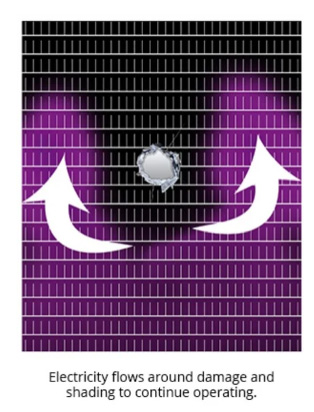Advancing solar power’s proliferation in space through flexible, thin-film PV.
By Paul Warley, CEO of Ascent Solar Technologies, Inc.
Recent years have seen growing scrutiny within the space industry regarding the feasibility of mass proliferation of solar power in space. Lofty upfront costs, heavy weight loads, brittle materials and more have caused many to give pause to the future of space-based solar power.
Traditional solar panels work well here on Earth. You can carefully affix them to the roof of your home or set up a solar farm, where there is ample space, and reliably harness large quantities of clean energy from the sun. But transporting and utilizing traditional solar panels in space, where their access to constant sunlight will go nearly unencumbered, has proven difficult: it isn’t easy to get these heavy panels up into space and their penchant for shattering upon impact with other objects can make justifying their high costs a bit precarious for some.
Thankfully, thin-film solar panels are here to help. The technology, which was once seen as a flash-in-the-pan fad, could hold the key to greater adoption of solar technology in space environments, thanks to its flexible, durable and lightweight design.
The key weight issue for space solar is not only that the added weight of the solar panels to the spacecraft means far more power at liftoff is required, which makes for a much costlier mission. This weight of the additional panels drags down the entire space vehicle, bringing it back down to Earth much quicker than desired. As a result of spending a great deal more money to get additional solar panels into space- the added weight causes them to come hurtling back to earth far earlier than desired potentially negating any cost savings projected with the addition of solar technology.
Thin-film solar has a considerably lower weight than its traditional counterpart, which means lower costs to launch vehicles into space and less weight dragging the vehicles back down to Earth. Additionally, their flexible design allows the technology to be applied to space vehicles in areas and spaces that traditional panels would not be able to fit, further bolstering the design advantages of thin-film PV in space.
In recent years, space organizations from around the world have begun to take action to address concerns over the planet’s growing space debris issue. The issue of wandering junk, consisting of defunct satellites and other space vehicles, has gotten so dire that some nations are beginning to impose fines on companies that elect to leave their unused technology in Earth’s orbit.
Space junk and debris pose a major functionality issue for any active space vehicle that incorporates traditional solar panels, as their glass components and other design features shatter and suffer detrimental damages when impacted by debris. This creates a compound issue of the solar array no longer functioning or generating power as well as the shattered glass and damaged panel materials becoming dislodged from the spacecraft, contributing additional material to our planet’s orbiting space debris issue.
Thin-film solar cells are flexible and do not feature any sort of brittle, glass coating, resulting in no concern over shattering to pieces if punctured by debris. In fact, the technology is designed to continue functioning nearly as well even after it sustains an impact. The only part of the solar cell that will experience functionality issues is the specific spot that collided with the debris. The rest of the cell and its corresponding array will continue to function at nearly its maximum capacity, with only the impacted area reducing its power generation (image below, for reference).

As concerns around the threat of space conflicts with foreign adversaries continue grow, thin-film PV is uniquely equipped to handle potential attacks or threats to space based assets.
Thin-film’s CIGS design may allow the technology to withstand and continue functioning in the face of an electromagnetic pulse or other energy-based impacts from either hostile, foreign threats or dangerous natural occurrences. Particularly intense solar flares, such as a Carrington like event, are expected cause most space technology to malfunction and create chaos and uncertainty.
Thin-film solar technology’s lightweight, flexible design also allows for the increased ability to retract inward into the space vehicle it helps power, reducing the overall size of the vehicle. Compacting the vehicle’s size means it may incur less physical damage from a foreign threat, aiming to impair it through physical contact, or from impacts with space debris that cannot be otherwise avoided.
As various nations of the world work to bolster their growing space defense capabilities, space vehicles powered by thin-film solar PV may prove advantageous in continuing to power devices that have been damaged or come under attack.
While the discourse around the advantages and disadvantages of employing solar technology in space continues, thin-film solar cells offer a clear path forward to the greater proliferation of solar power in space, thanks to its lightweight, flexible, and resilient qualities.

Paul Warley is CEO of Ascent Solar.
In this episode, I sat down with Beejan Giga, Director | Partner and Caleb Emerson, Senior Results Manager at Carpedia International. We discussed the insights behind their recent Industry Today article, “Thinking Three Moves Ahead” and together we explored how manufacturers can plan more strategically, align with their suppliers, and build the operational discipline needed to support intentional, sustainable growth. It was a conversation packed with practical perspectives on navigating a fast-changing industry landscape.